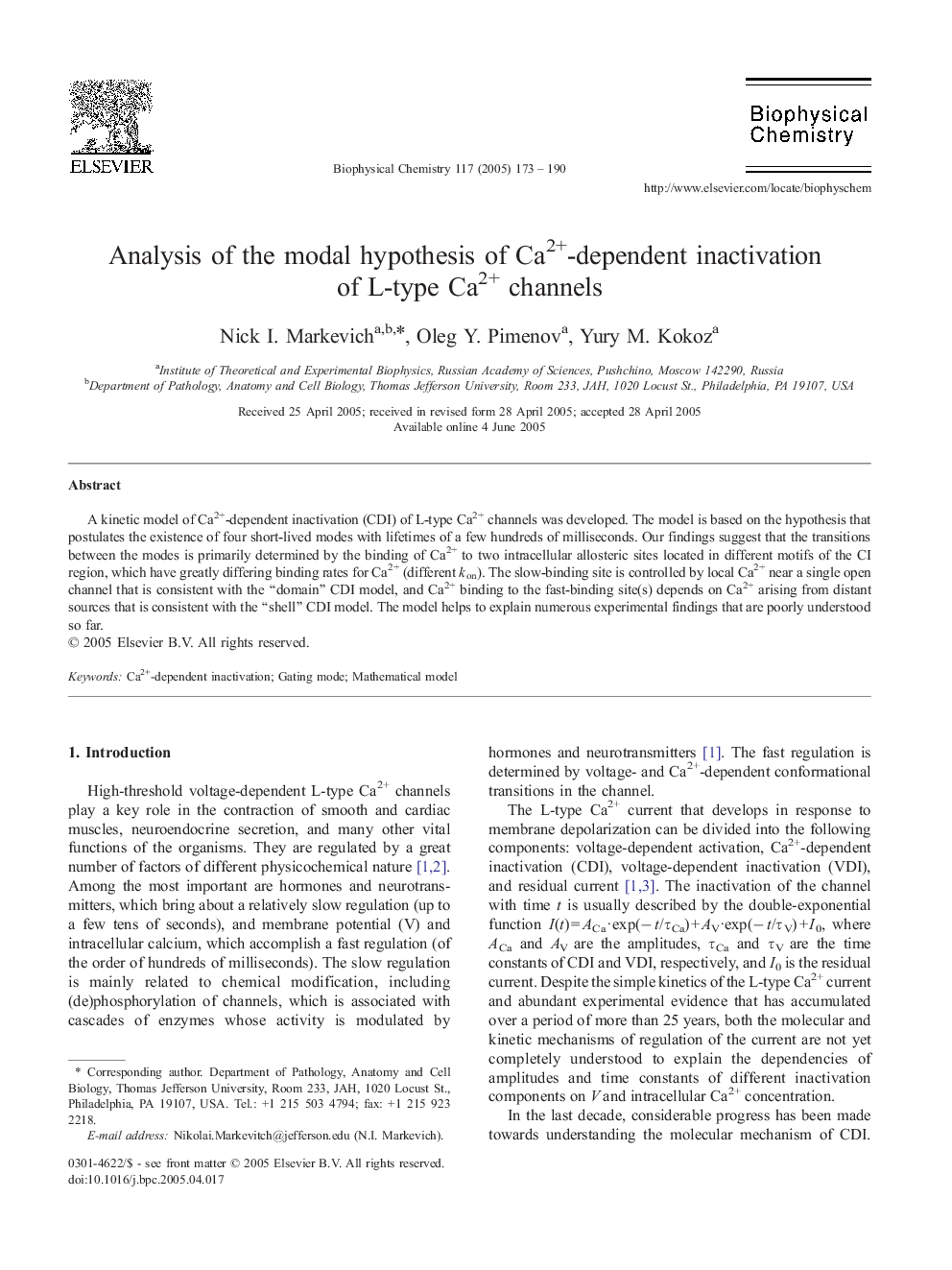| Article ID | Journal | Published Year | Pages | File Type |
|---|---|---|---|---|
| 9573198 | Biophysical Chemistry | 2005 | 18 Pages |
Abstract
A kinetic model of Ca2+-dependent inactivation (CDI) of L-type Ca2+ channels was developed. The model is based on the hypothesis that postulates the existence of four short-lived modes with lifetimes of a few hundreds of milliseconds. Our findings suggest that the transitions between the modes is primarily determined by the binding of Ca2+ to two intracellular allosteric sites located in different motifs of the CI region, which have greatly differing binding rates for Ca2+ (different kon). The slow-binding site is controlled by local Ca2+ near a single open channel that is consistent with the “domain” CDI model, and Ca2+ binding to the fast-binding site(s) depends on Ca2+ arising from distant sources that is consistent with the “shell” CDI model. The model helps to explain numerous experimental findings that are poorly understood so far.
Related Topics
Physical Sciences and Engineering
Chemistry
Physical and Theoretical Chemistry
Authors
Nick I. Markevich, Oleg Y. Pimenov, Yury M. Kokoz,
